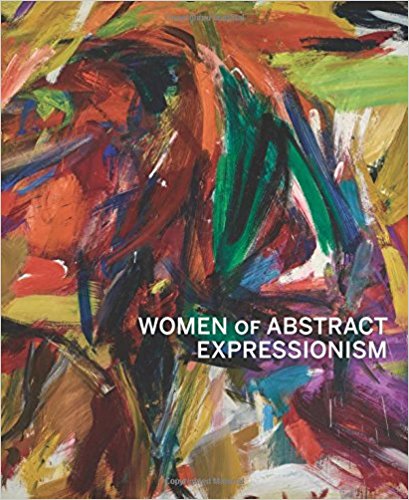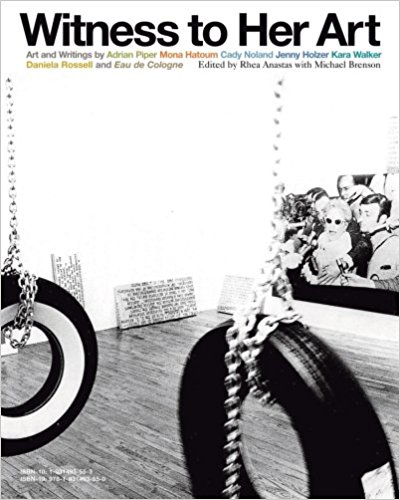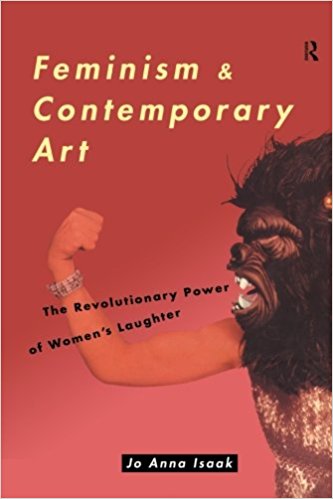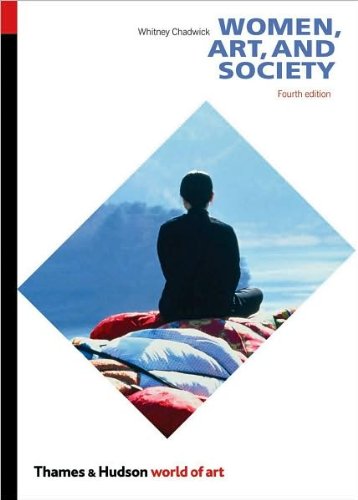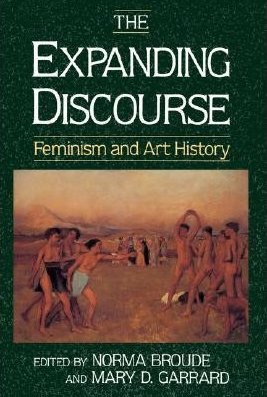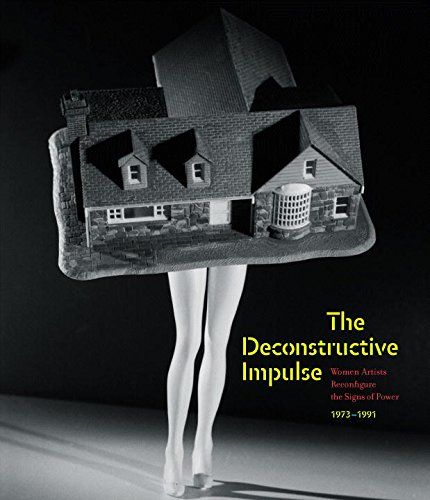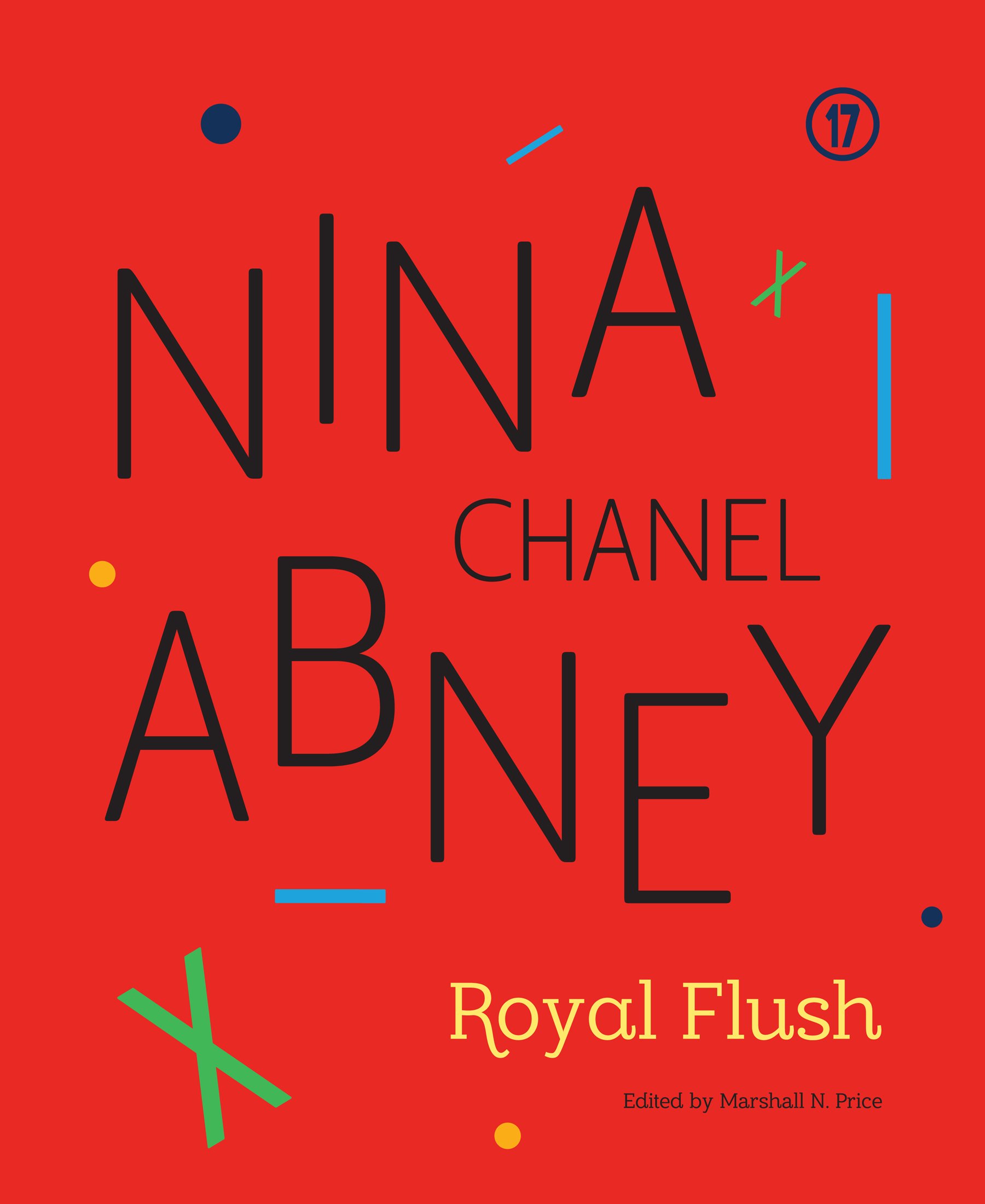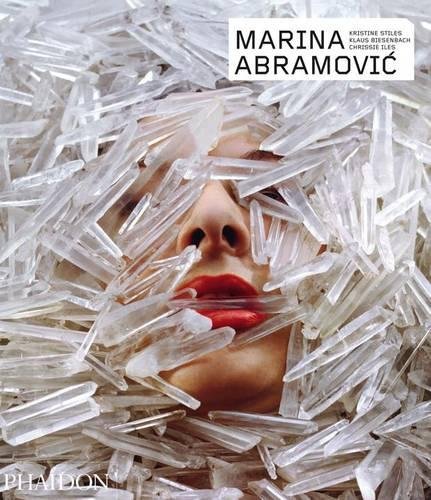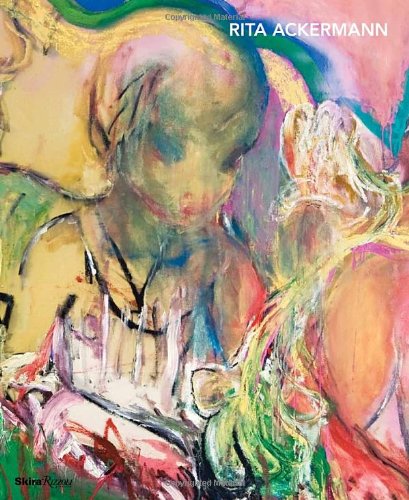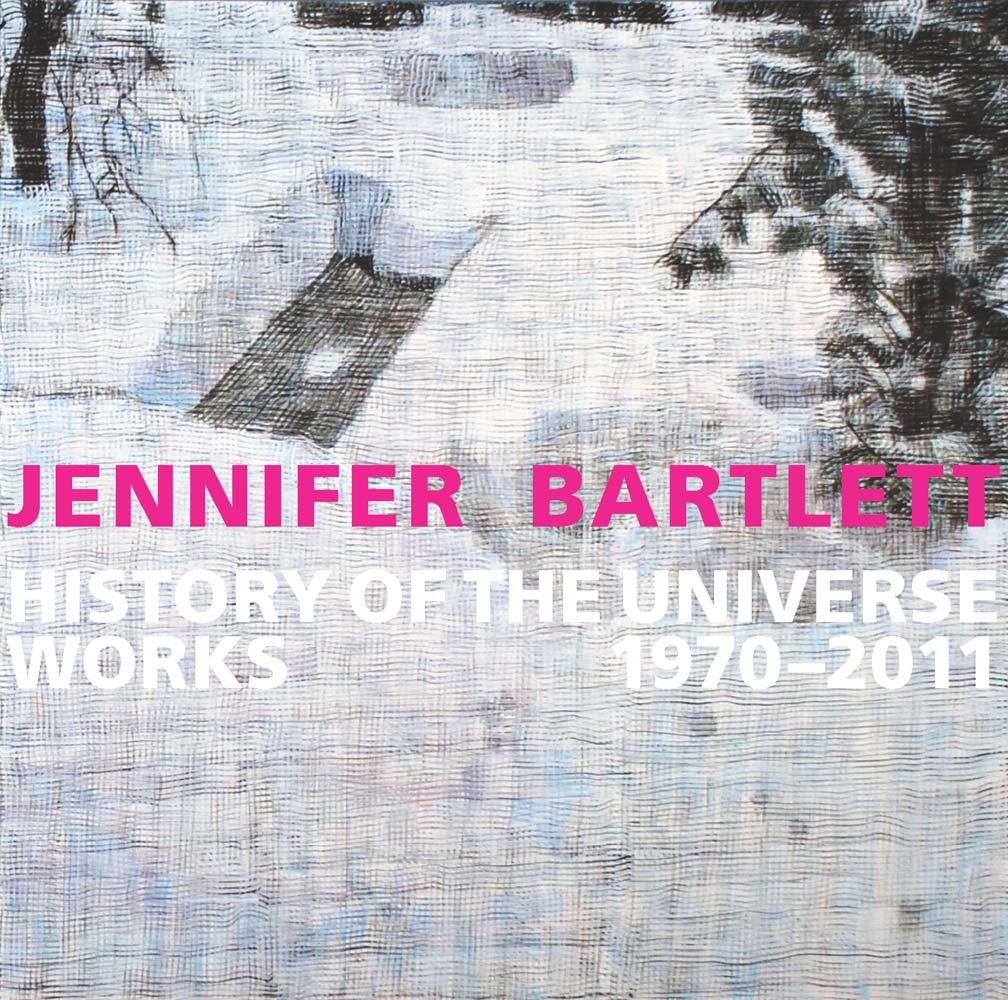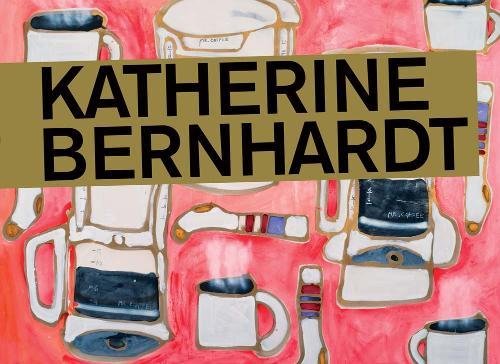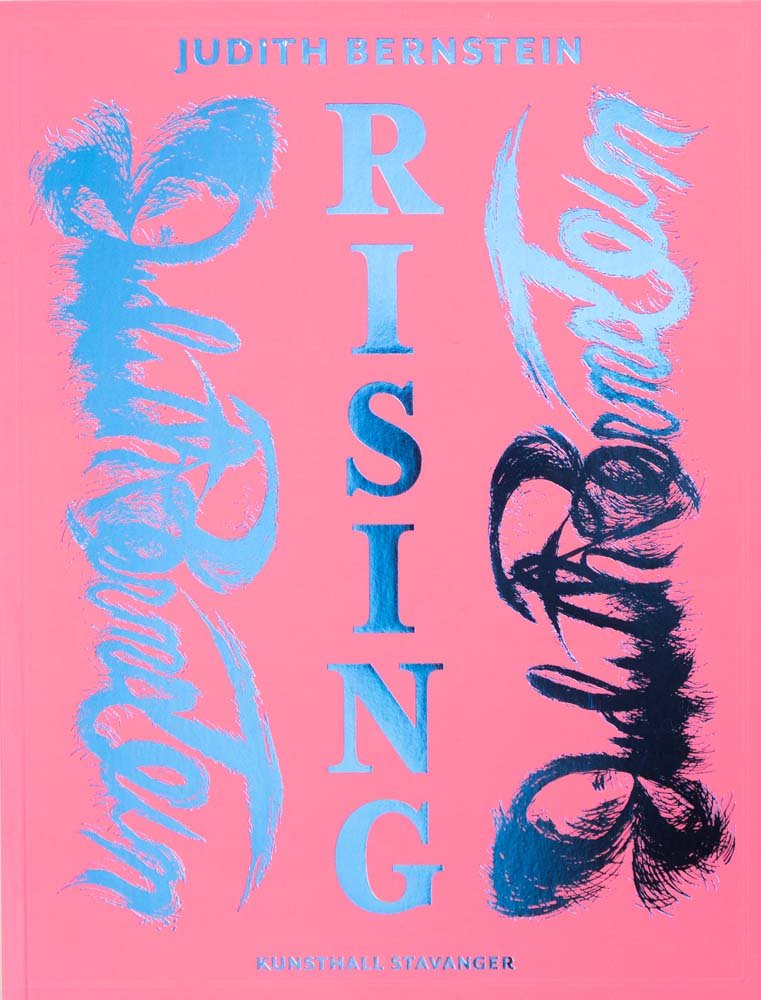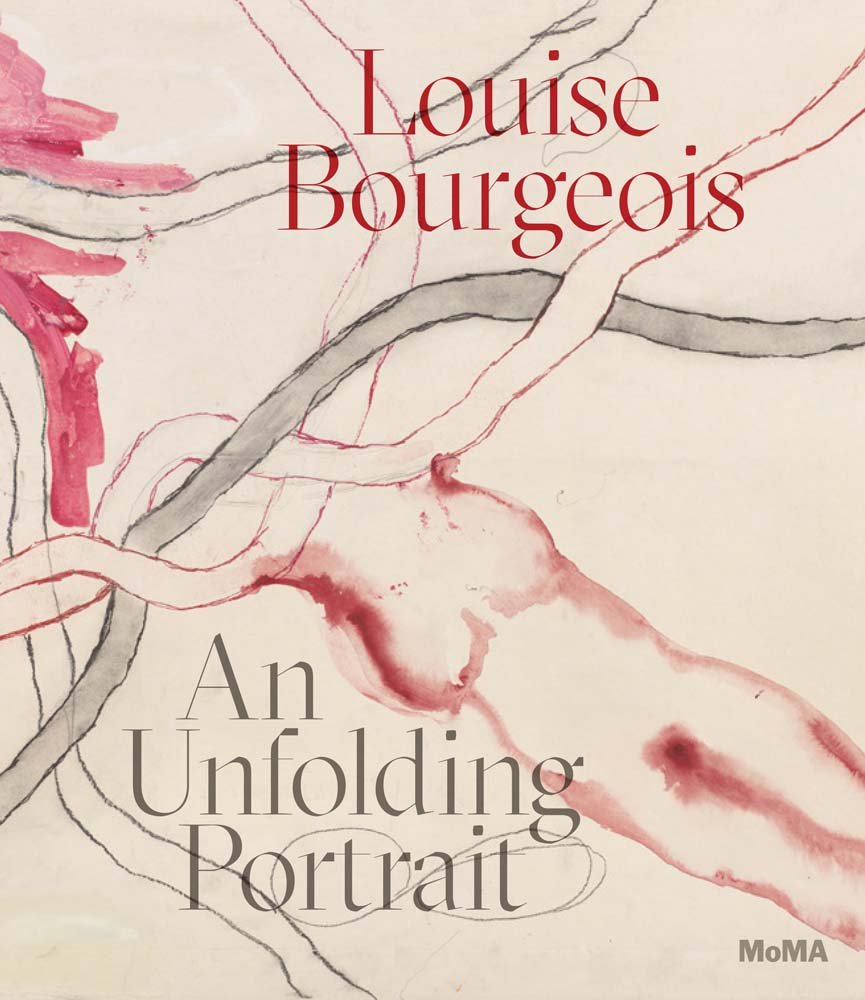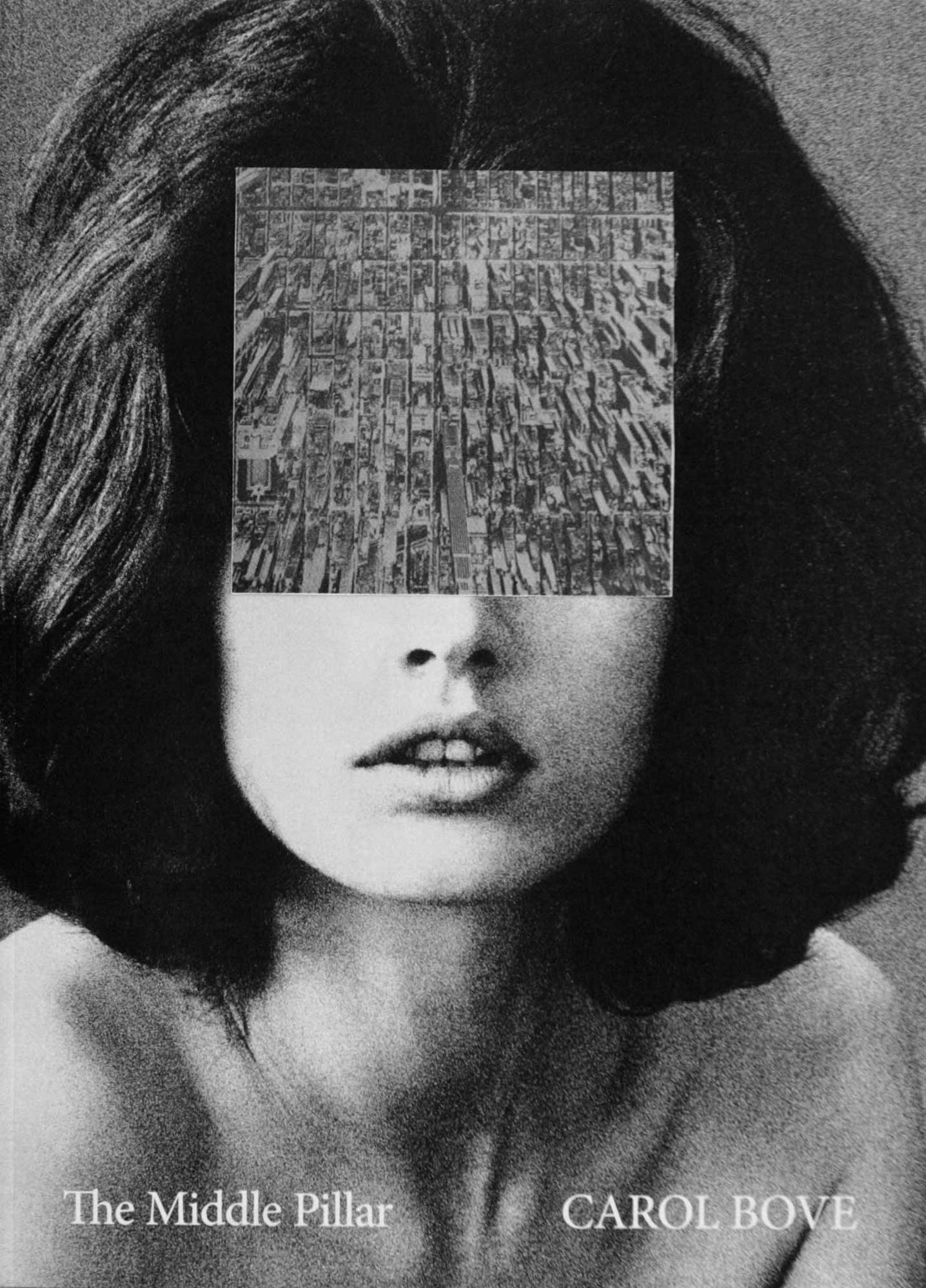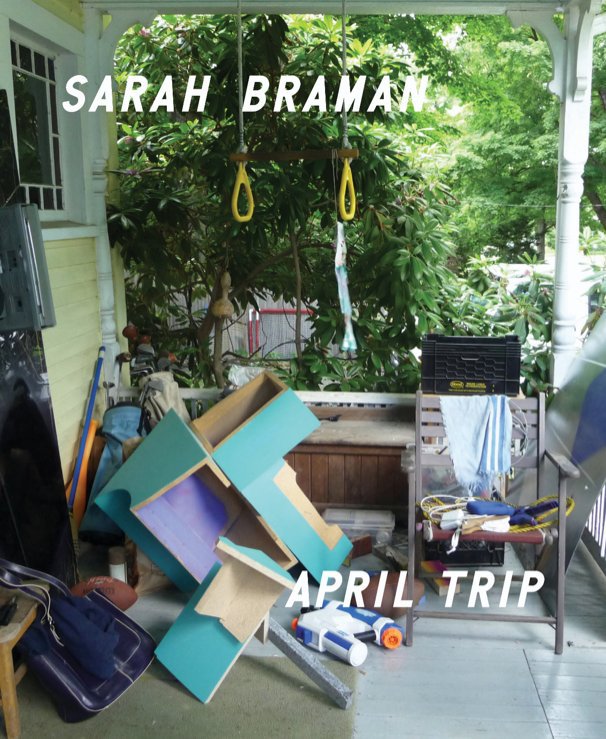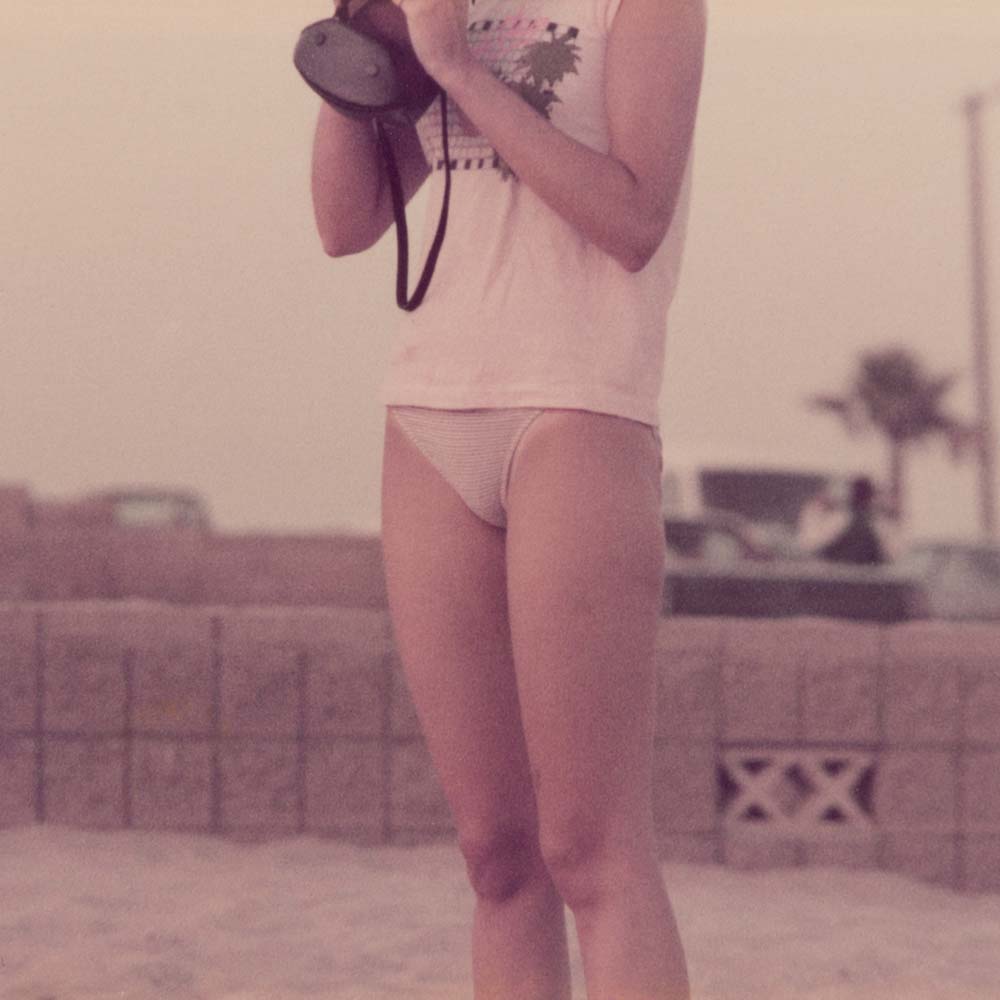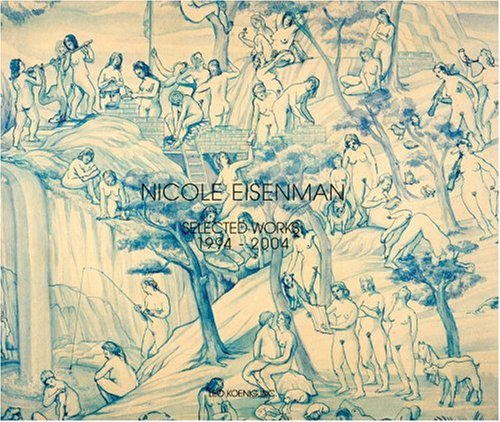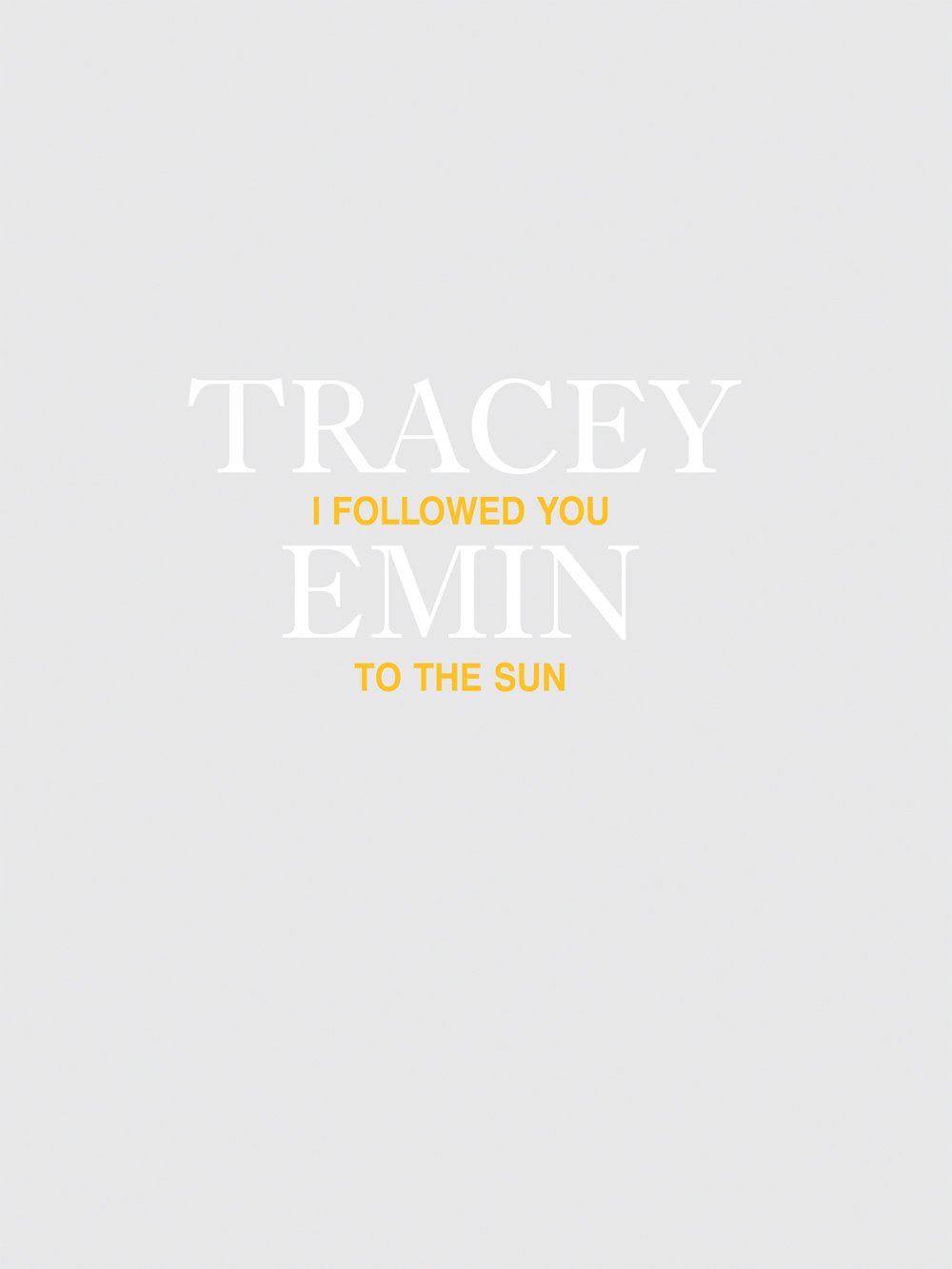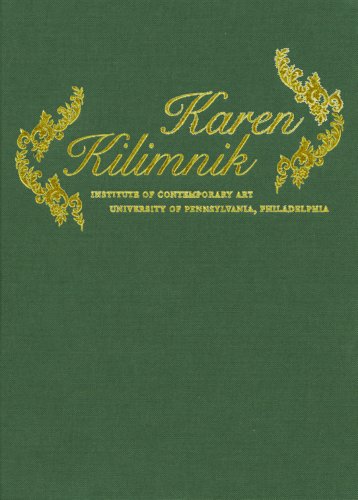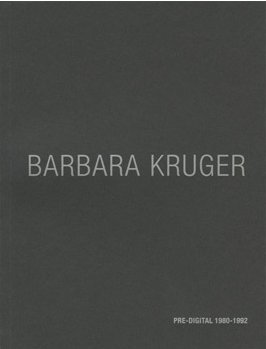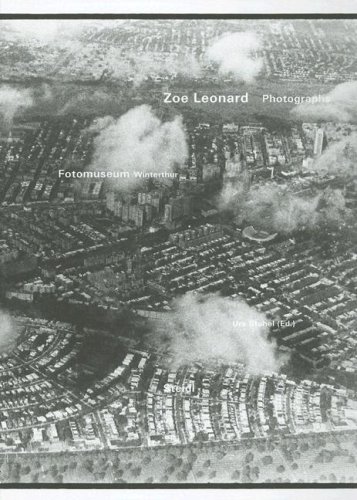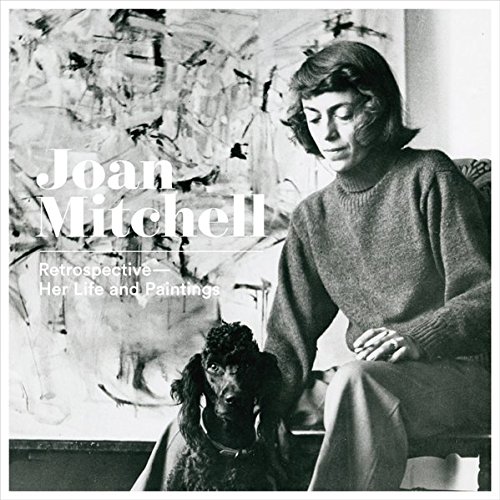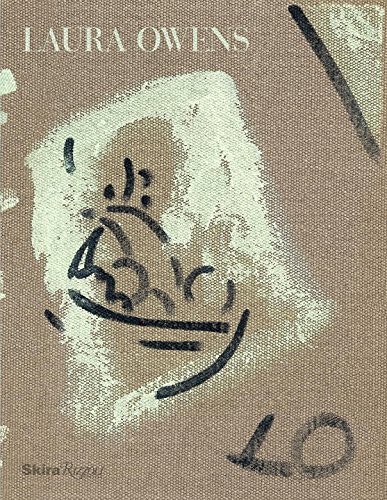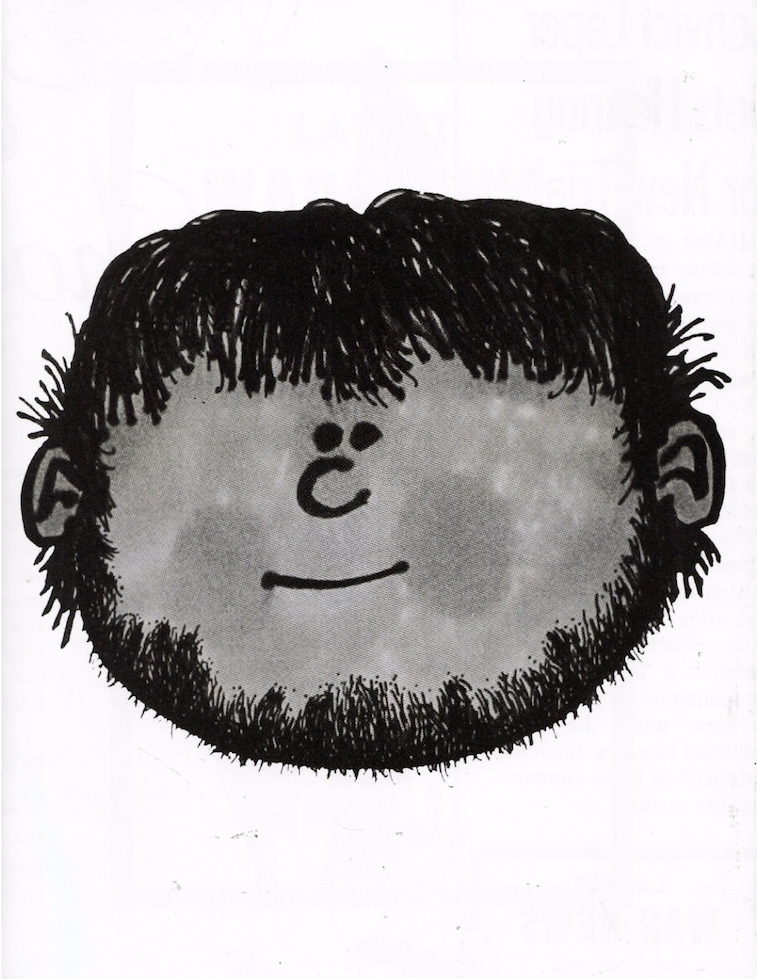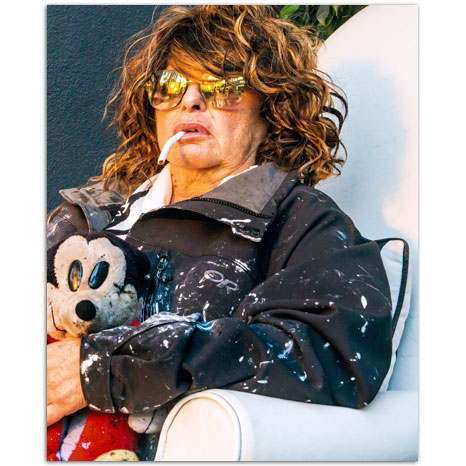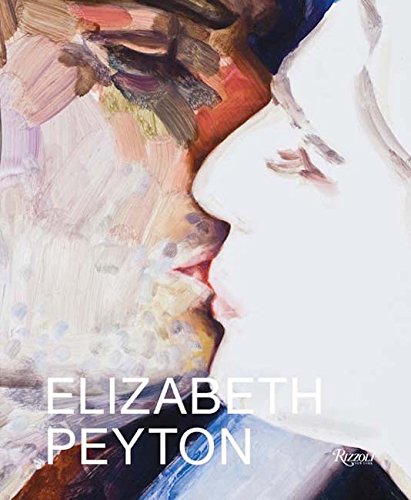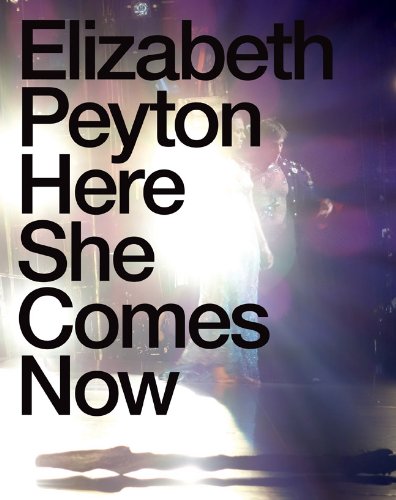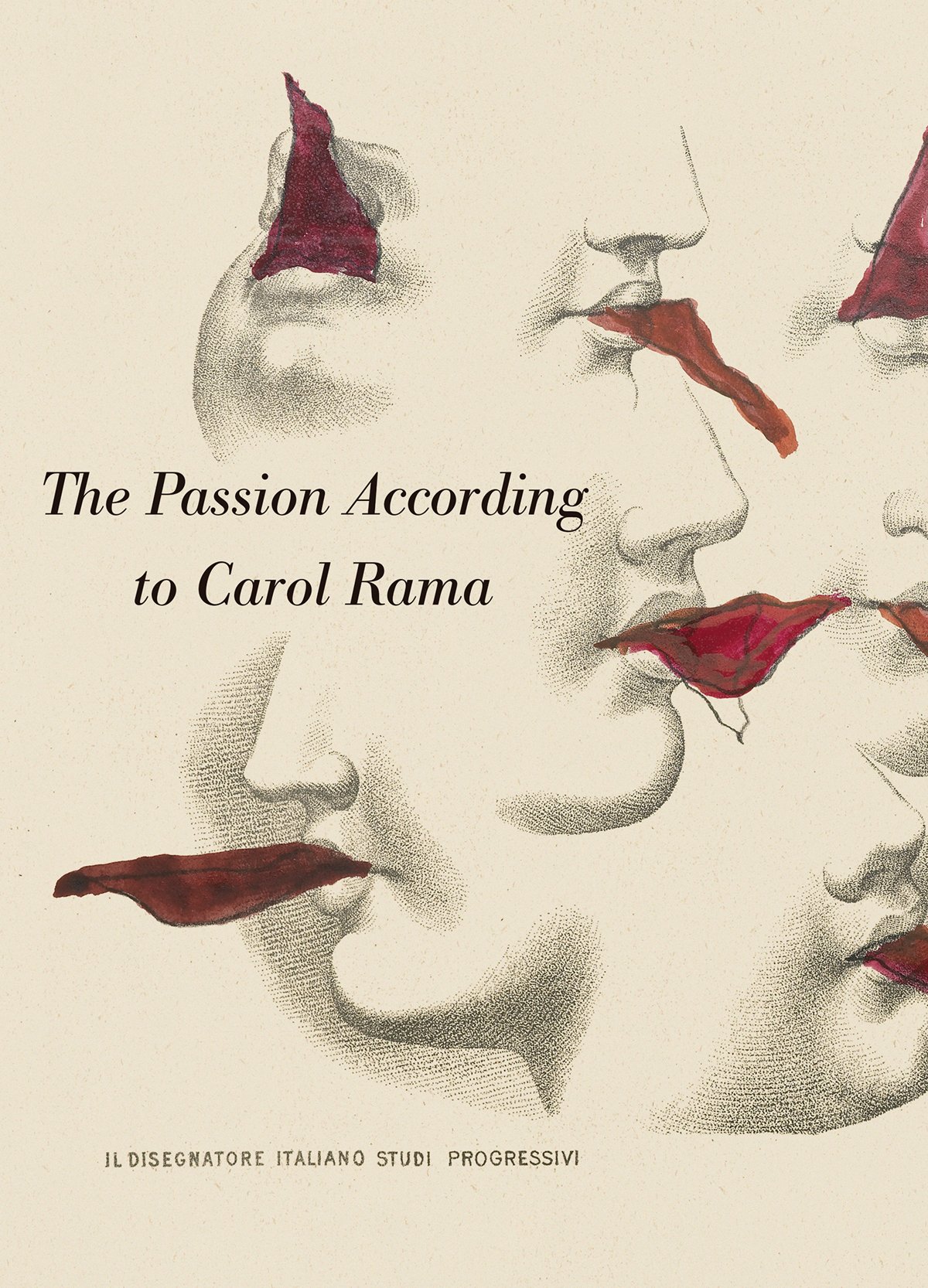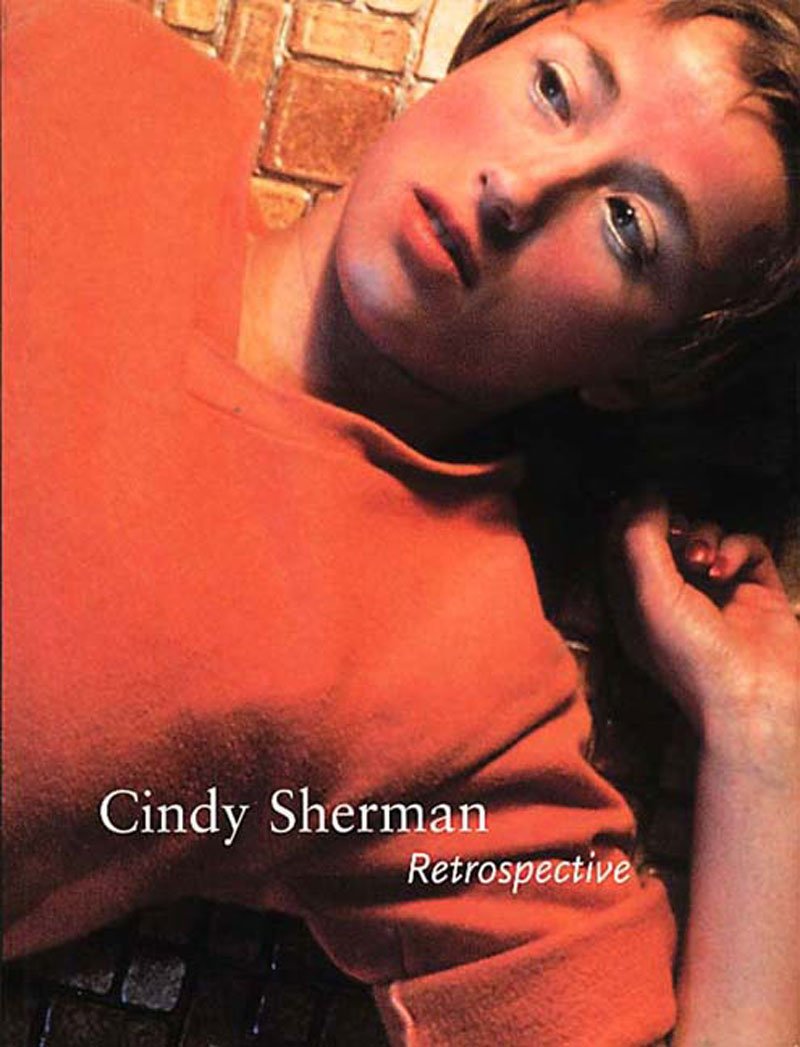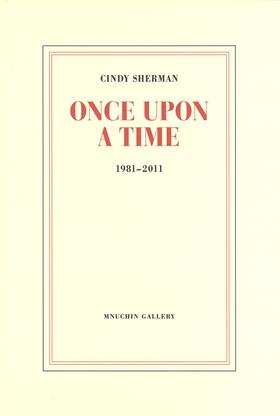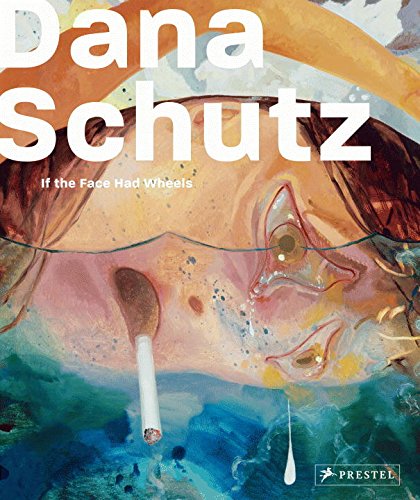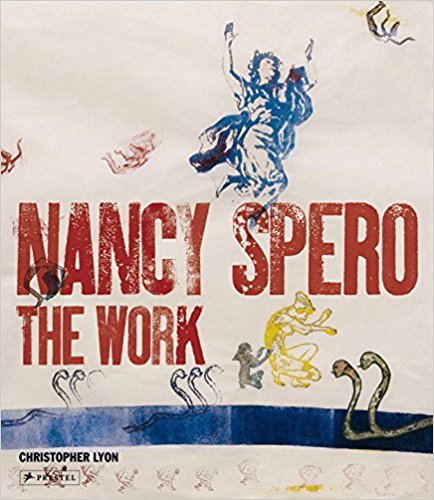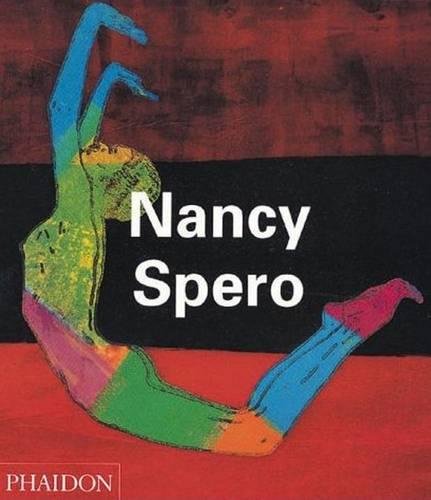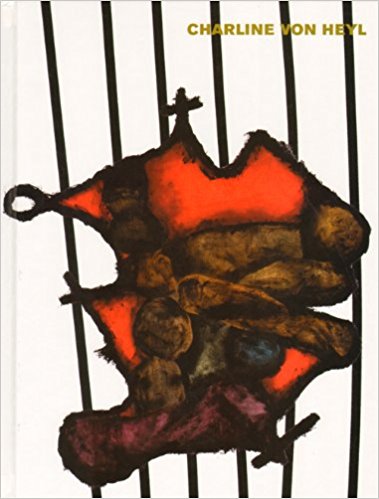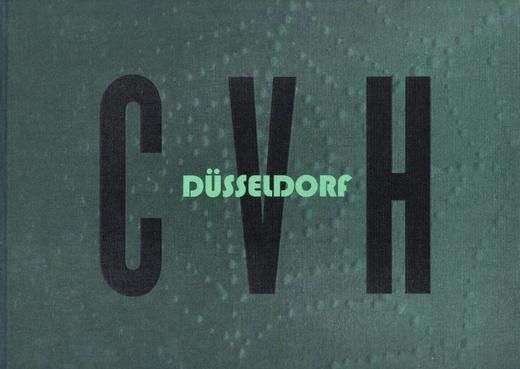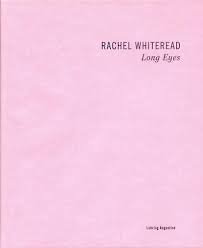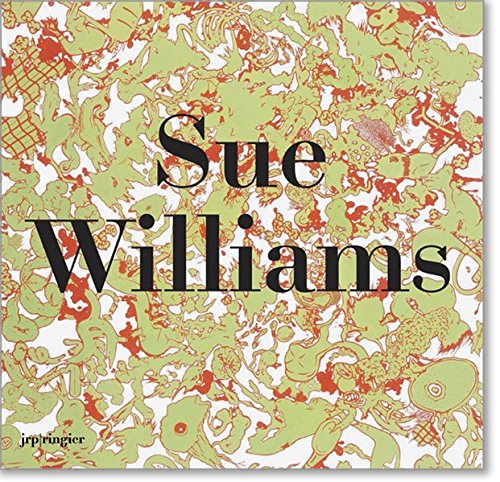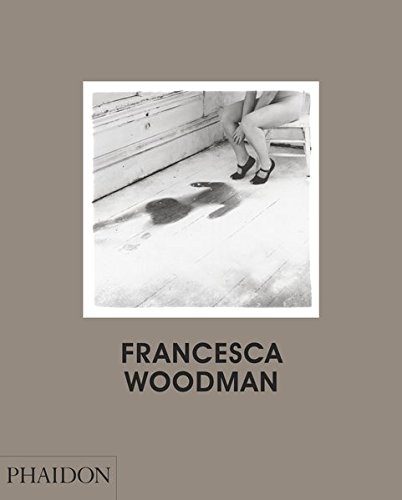Library
Library: Women’s History Month
Greenwich March 5th, 2018
The Brant Foundation’s Library features a selection of resources inspired by Women’s History Month.
Explore the works of Jennifer Barlett, Nancy Spero, Agnes Martin, Joan Mitchell, and many more female artists who have continued to play an important role in art history.
Please contact us at info@brantfoundation.org to make an appointment to visit our library.
About The Brant Foundation Library
The Brant Foundation’s library program was established in 2009 to facilitate the appreciation and understanding of contemporary art and to advance our mission of promoting arts education. As both a museum and art study center, the Foundation’s library serves as a crucial resource for students, scholars, and educators by providing access to a unique collection of hard-to-find materials. After noticing the difficulties of obtaining contemporary art publications, typically as a result of rarity or expense, the Foundation was inspired to make efforts to broaden their holdings and increase accessibility to the public.
By reaching out to the surrounding arts community for help, the Foundation has accumulated an actively growing, rich collection of contemporary art books. With the contributions from the many organizations and institutions that share our vision, the public gains access to a wider range of materials used for the scholarly study and examination of contemporary art. Housing over 1,000 volumes – from exhibition catalogs and artist monographs to art criticism texts and periodicals – the library reflects the Foundation’s collection and admiration of contemporary art. Because of the rarity and value of the materials, our library is non-circulating, but we welcome and encourage the public to make use of the study center during operating hours. Please contact info@brantfoundation.org to make an appointment to visit The Brant Foundation’s library.
Women of Abstract Expressionism
by Irving Sandler (Author), Joan Marter (Editor), Gwen F. Chanzit (Introduction), Robert Hobbs (Contributor), Ellen G. Landau (Contributor), Susan Landauer (Contributor)
The artists Jay DeFeo, Helen Frankenthaler, Grace Hartigan, Elaine de Kooning, Lee Krasner, Joan Mitchell, and many other women played major roles in the development of Abstract Expressionism, which flourished in New York and San Francisco in the 1940s and 1950s and has been recognized as the first fully American modern art movement. Though the contributions of these women were central to American art of the twentieth century, their work has not received the same critical attention as that of their male counterparts.
Women of Abstract Expressionism is a long-overdue survey. Lavishly illustrated with full-color plates emphasizing the expressive freedom of direct gesture and process at the core of the movement, this book features biographies of more than forty artists, offering insight into their lives and work. Essays by noted scholars explore the techniques, concerns, and legacies of women in Abstract Expressionism, shedding light on their unique experiences. This groundbreaking book reveals the richness of the careers of these important artists and offers keen new reflections on their work and the movement as a whole.
Witness to Her Art
by Kara Walker (Author, Artist), Daniela Rossell (Author, Artist), Adrian Piper (Artist)
his radical new study aims to change the way that some of the most influential artists of the past 40 years are seen–all of them women. Emphasizing questions of autonomy, critical intelligence and artistic intention, Witness to Her Art presents works by Adrian Piper, Mona Hatoum, Cady Noland, Jenny Holzer, Kara Walker, Daniela Rossell and Eau de Cologne, a magazine published by gallerist Monika Spruth. The artworks are accompanied by original writings by the artists, contemporaneous criticism and newly commissioned essays by Pamela Franks, Aruna D’Souza, Johanna Burton, David Levi Strauss, Hamza Walker and Cuauhtemoc Medina. The ambitious works presented and interpreted herein invite us to consider the impact of the feminist revolution across generations while rendering obsolete any stigma associated with shows or catalogues limited to women artists. Taking its lead from Conceptualism, feminism, and from its included artists, Witness to Her Art reaches for art history’s capacity as a medium of world-making.
Feminism and Contemporary Art: The Revolutionary Power of Women's Laughter
by Jo Anna Isaak (Author)
This study of the work of women artists discusses the work of individual women artists in the context of contemporary art practices and in relation to key feminist issues in art history. It looks at the work of a diverse range of artists including women from the United States, the former Soviet Union and the United Kingdom – discussing, among others, the work of Barbara Kruger, Cindy Sherman and the V Girls. Work by 20th-century Soviet women artists is covered, providing a case study of the production of art in non-Western economic, political and ideological circumstances
Women, Art, and Society
by Whitney Chadwick
The definitive work on the subject, mapping a complete history of women artists from the Middle Ages and the Renaissance to today
This acclaimed study challenges the assumption that great women artists are exceptions to the rule who “transcended” their sex to produce major works of art. While acknowledging the many women whose contributions to visual culture have often been neglected, Whitney Chadwick’s survey reexamines the works themselves and the ways in which they have been perceived as marginal, often in direct reference to gender. This revised edition features a new final chapter that charts the evolution of feminist art history and pedagogy since the 1970s. It is brought up to date with discussions of some of the most significant women artists to have emerged in recent years, including Wangechi Mutu, Jenny Saville, and Teresa Margolles.
The Expanding Discourse: Feminism and Art History
by Norma Broude (Editor), Mary Garrard (Editor)
A sequel to the pioneering volume, Feminism and Art History: Questioning the Litany, published in 1982, The Expanding Discourse contains 29 essays on artists and issues from the Renaissance to the present, representing some of the best feminist art-historical writing of the past decade. Chronologically arranged, the essays demonstrate the abundance, diversity, and main conceptual trends in recent feminist scholarship
The Deconstructive Impulse: Women Artists Reconfigure the Signs of Power, 1973-1991
This survey of leading women artists from the late twentieth century examines the crucial feminist contribution to the deconstructivist movement. The practice of deconstructivism, a term describing artwork that examines the imagery of the popular media, was significantly shaped by dozens of important female artists during a critical era in late twentieth-century visual culture. These artists subverted their source material, often by appropriating it, to expose the ways that commercial images express imbalances of power. The mechanisms of power in mainstream art institutions were also subject to these artists’ critique. This exhibition catalogue features a diverse group of North American women whose transformative and often provocative work deals with gender, sexual, racial, ethnic, and class-based inequities. Among the artists included in the book are Dara Birnbaum, Sarah Charlesworth, The Guerrilla Girls, Susan Hiller, Jenny Holzer, Mary Kelly, Silvia Kolbowski, Barbara Kruger, Louise Lawler, Martha Rosler, Cindy Sherman, Laurie Simmons, Lorna Simpson, Carrie Mae Weems, and others. Essays by leading critics discuss such topics as the importance of critical theory and sexual politics in the art world of the 1980s; how domesticity is represented in commercial media and the art that addresses it; the importance of psychoanalytic theory as a critical framework; and the sexualization of inanimate objects.
This book was generously donated by the Neuberger Museum.
Nina Chanel Abney: Royal Flush
By Marshall N. Price (Author)
Contributors: Jamillah James, Natalie Y. Moore, Marshall N. Price, Richard J. Powell, Sarah Schroth
Marina Abramovic
by Marina Abramovic (Author), Kristine Stiles (Author), Klaus Biesenbach (Author), Chrissie Iles (Author)
Since the early 1970s, Marina Abramovic (b. 1946) has pioneered the use of performance as a visual art form, exploring her physical and emotional limits in some of the most iconic works in contemporary art. Her body is her primary subject and medium, and she has withstood pain, exhaustion, and danger in her ongoing quest for emotional and spiritual transformation. As a vital member of the generation of pioneering performance artists that includes Bruce Nauman, Vito Acconci, and Chris Burden, Abramovic created some of the most historic early performance pieces. Of these artists, she is the only one still making important durational works.
Abramovic features prominently in virtually every survey published on performance art, and her works are held in the permanent collections of many of the world’s top museums, including the Musee Nationale d’Art Moderne, Centre Pompidou, Paris; the Stedelijk Museum, Amsterdam; and the Museum of Modern Art, New York. In November 2005 at New York’s Guggenheim Museum, Abramovic staged a landmark weeklong series of performances entitled Seven Easy Pieces. Her twelve-day ‘living installation’, The House with the Ocean View was on numerous critics’ lists as the best exhibition of 2002, and she was awarded the Golden Lion at the 1997 Venice Biennale for her video installation/performance Balkan Baroque.
Rita Ackermann
By Rita Ackermann (Author), Bonnie Clearwater (Author), Harmony Korine (Author), Felix Ensslin (Author), & John Kelsey (Author)
A native of Hungary, Rita Ackermann moved to New York City in the mid-1990s. She arrived to find a culture (and art world) in transition: rave and zine culture was in full swing; collaborations between artists, musicians, and magazine and book publishers were pervasive; and the dawning of the Internet age was upon us. Within a few short months after settling in New York, the artist received widespread attention for her work, particularly a group of canvases populated with figures inspired by the cult German film We Children from Bahnhof Zoo about the heroin subculture of the 1970s. Her work forged a new visual language: paintings, drawings, and collages which telescoped between a virtuoso—and sometimes brutalistic—expressionism and taut, precise figurative drawing. Ackermann’s work explores the paradoxical relationship between fragility and violence, as she derives inspiration from literature, film, philosophy, and popular culture.
This lavishly illustrated volume—created in close collaboration with the artist—chronicles the entirety of her career. Bonnie Clearwater connects the artist to Eastern European art historical precedents and examines the evolution in her practice over the last twenty years. Felix Ensslin thoughtfully examines Ackermann’s work through a panoply of European theorists’ writings, from Jacques Derrida to Jacques Lacan. Harmony Korine (famed writer of Kids) contributes an imagined conversation with the artist. John Kelsey explores the artist’s use of collage and its meaning in her body of work, and Josh Smith contributes a foreword, in the form of a personal letter.
Jennifer Bartlett: History of the Universe: Works 1970-2011
by Klaus Ottmann (Author), Terrie Sultan (Author), Jennifer Bartlett (Author)
A critical and commercial success since the 1970s, Jennifer Bartlett (b. 1941) has become one of the most visionary and influential artists of our time. In the words of New York Times critic John Russell, Bartlett’s art “enlarges our notion of time, and of memory, and of change, and of painting itself.” Her abundant intelligence and inventiveness allow her to synthesize diverse sources and styles, and imbue her paintings with expressive life and moral imagination. Included in this handsome volume are an intimate interview with the artist and an excerpt from History of the Universe, Bartlett’s first novel, giving further insight into the thought processes of this uniquely creative artist.
Katherine Bernhardt
By Nicole Rudick (Author), Dan Nadel (Editor), Katherine Bernhardt (Artist)
This is the first book to provide a comprehensive overview of Katherine Bernhardt’s wildly popular pattern paintings. Spanning 2013 through 2016, it collects over 100 of her brightly colored canvases. Well known for paintings of super models ripped from glossy fashion magazines and, more recently, Morrocan rug motifs, in 2013 Bernhardt dropped all direct quotation and now paints straight from her imagination, mining her own fertile reservoir of experience, imagery and sensation. Since then, Bernhardt has produced paintings that mix an assortment of objects reflecting her daily experiences, from life in New York to her love of Puerto Rico, her Saint Louis roots and family life. The objects are painted with incredible verve and tenacity, and include a jumble of the following items on colorfully activated grounds: watermelon slices, boom boxes, computers, pizza slices, cassette tapes, hamburgers, basketballs, old cell phones, airplanes, fruit, sharks, water, sea turtles, cigarettes, sharpies and keyboards. Bernhardt presents a slightly delirious feeling of New York City, the out-of-date and the up-to-the-minute all in one.
Katherine Bernhardt was born in Saint Louis in 1975 and currently lives in New York. She received her MFA from the School of Visual Arts in New York and her BFA from the School of the Art Institute of Chicago. Her first solo museum exhibition will be at the Contemporary Art Museum St. Louis in January 2017, followed by The Modern, Fort Worth, in April 2017.
Judith Bernstein: Rising
by Judith Bernstein
Rising is the first major catalog on the work of feminist painter Judith Bernstein (born 1942), tracing the former Guerilla Girl’s five-decade career from the ‘60s to the present, and contextualizing her vast oeuvre within the history of art, feminism and the American sociopolitical climate of the late 20th century.
Louise Bourgeois: An Unfolding Portrait
by Deborah Wye (Author), Louise Bourgeois (Artist)
Louise Bourgeois: An Unfolding Portrait explores the prints and books of the celebrated sculptor. This little-known body of work is vast in scope―numbering some 1,200 individual compositions―and highly significant within her larger practice. These works encompass the same themes and motifs that occupied Bourgeois throughout her career, and they are explored here within the context of related sculptures, drawings and early paintings. This investigation sheds light on Bourgeois’ creative process overall, most vividly through the evolving print states and variants that led to her final compositions; seeing these sequences unfold is akin to looking over the artist’s shoulder as she worked.
Published in conjunction with an exhibition at The Museum of Modern Art, this catalog presents more than 270 prints and books, organized thematically, and includes an essay that traces Bourgeois’ involvement with these mediums within the broader developments of her life and career. It also emphasizes the collaborative relationships that were so fundamental to these endeavors. Included are interviews with Bourgeois’ longtime assistant, a printer she worked with side-by-side at her home/studio on 20th Street in New York and the publisher who, in the last decade of her life, encouraged her to experiment with innovative prints that broke the traditional boundaries of the medium. The volume is rounded out with a chronology and bibliography that focus on prints and illustrated books while also providing general background on Bourgeois’ life and art.
Carol Bove: The Middle Pillar
Carol Bove (b. 1971, Geneva) is an American artist known for her simple yet intricate assemblages of found and made objects. Carefully arranged on pedestals, elevated platforms, or directly against walls and ceilings, these yield unexpected, poetic, and multilayered meanings, which seem to derive from the composition of the objects rather than the inherent substance of the individual components. Using a wide range of materials, including books, driftwood, peacock feathers, metal, concrete, foam, and loans from other artists, Bove’s works are subtle assemblages resisting categorization despite their determined relationships with modernist display methods.
Anne Collier: Women with Cameras
Women with Cameras (Anonymous) is a new artist’s book by Anne Collier (born 1970), with a text by Hilton Als (winner of the 2017 Pulitzer Prize for Criticism), that consists of a sequence of 80 images of found amateur photographs that each depict a female subject in the act of holding a camera or taking a photograph.
Dating from the 1970s to the early 2000s, these artifacts of the pre-digital age were collected by Collier over a number of years from flea markets, thrift stores and online market places. Each of these photographs has, at some point in the recent past, been discarded by its original owner. The concept of “abandonment,” of photographic images and the personal histories that they represent, is central to Women with Cameras (Anonymous), which amplifies photography’s relationship with memory, melancholia and loss. The sequence of the images in Collier’s book follows the format of her 35mm slide projection work Women with Cameras (Anonymous) (2016), that was recently shown to great acclaim in Tokyo, Japan, and Basel, Switzerland.
This book was generously donated by Karma.
Nicole Eisenman: Selected Works 1994-2004
by Victor Mathieu (Editor), Amy Sillman (Introduction), Nicole Eisenman (Artist), Matt Sharp (Contributor)
This first monograph devoted to the work of the influential and transgressive New York City painter of all things excessive, queer, abject, kitsch and twisted features selected works from 1994-2004–including drawings, paintings, collages and installations. Eisenman’s work runs the gamut of visual references from Surrealism to Pointillism to WPA murals to name but a few, deftly moving from orgiastic crowds to Dionysian sacrifices, minotaur hunts and romps through art history and pop culture. Yet the wit and scope of Eisenman’s vision often disguise the intimacy of her work. Here, cliches are turned inside out, gender roles are questioned and one is engaged without fully realizing that the lushly painted scenes are always revealing something very personal. Features an essay by the painter Amy Sillman, a “panel discussion” between some of Eisenman’s paintings by Matt Sharpe and a biography.
Tracey Emin: I Followed You to the Sun
by Tracey Emin
Regarded as one of the world’s leading contemporary artists, Tracey Emin (born 1963) has gained international acclaim for her blunt, personal and revealing style, which elicits a broad spectrum of emotions ranging from shock to empathy to self-reflection. Drawing on personal experience, Emin often reveals painful situations with brutal honesty and poetic humor. I Followed You to the Sun features a very personal collection of works titled the Lonely Chair drawings, which are published here for the first time. In this series of self-portraits, Emin depicts a solitary female in her signature gestural style. The images are drawn from photographs that Emin took of herself and convey poignant emotions of longing and sadness. Emin’s musings on love and loneliness are interspersed throughout the book and further illustrate the subconscious nature of the drawings. This artist’s book is published on the occasion of Emin’s exhibitions at both of Lehmann Maupin’s New York locations.
Karen Kilimnik
by Ingrid Schaffner (Author), Scott Rothkopf (Author), Joel Lobenthal (Author), Dominic Molon (Author), Wayne Koestenbaum (Author), Claudia Gould (Introduction), Karen Kilimnik (Artist)
Published on the occasion of the first major museum survey of Karen Kilimnik’s work, a traveling exhibition with stops in Philadelphia, Miami, Aspen and Chicago, this chic but scholarly catalogue is the most substantial on the artist to date. It highlights an important American artist whose work objectifies mass-cultural desire with glittering poignancy and includes a nuanced selection of 15 years worth of collage-based activity in the realms of painting, drawing, photography, sculptural installation and object-making, as well as new work. Fully illustrated at 180 pages, it features an essay by exhibition curator Ingrid Schaffner which analyzes the development of the artist’s work and its historic contexts as well as four contributions from authors who address a theme or image within the work. Thus, cultural critic Wayne Koestenbaum addresses gossip; dance historian Joel Lobenthal writes on ballet; Associate Curator at the Museum of Contemporary Art Chicago, Dominic Molon, focuses on influence; and Artforum Senior Editor Scott Rothkopf considers Kilimnik’s titles. Includes a complete bibliography and an illustrated exhibition chronology.
Called “sharp and witty” and “long overdue” for major recognition by The New York Times’ Holland Cotter, Kilimnik is an important international artist with an extensive publication and exhibition history. Born in Philadelphia in 1955, she studied architecture at Temple University and continues to live in the region. Since 1991, her work has been represented by 303 Gallery in New York. She has had recent solo exhibitions at the Museum of Modern Art, Ireland, and White Cube, London. In 1992, ICA Philadelphia presented Kilimnik’s first museum show as part of its “Investigations” series.
Barbara Kruger, Pre Digital 1980-1992
by Barbara Kruger
Barbara Kruger, Pre Digital 1980-1992 is a fully illustrated catalogue featuring 44 color plates of Kruger’s intimately scaled artworks which explore a unique stage of her career. All of the works were created before the widespread use of digital imagery and vary in sizes no larger than 11 x 13 inches. They are composed of images and texts from the media altered in order to transform their original visual and conceptual meanings. A negative of the works was then produced and used to make enlarged version of these initial “paste-ups.”
Zoe Leonard: Photographs
by Urs Stahel (Author, Editor), Elisabeth Lebovici (Author), Zoe Leonard (Artist)
Photographer Zoe Leonard practices a type of cerebral roaming combined with carefully considered observation. For more than 20 years she has crisscrossed nature and culture, cityscapes and museums, always searching for signs that say something about structures, about natural and cultural conditions and the contradictions, parallels and connections between them. Leonard’s photographs of anatomical wax figures, fashion shows, trees and fences present figures in sparse black-and-white images that open up visual fields of thought and reveal within them our visible world–the concrete and established structures that make up our reality. Leonard first created an international stir at the Documenta 9 exhibition in Kassel, Germany, in 1992, when she placed black-and-white photographs of female genitalia in the context of a male-dominated museum. Since then, the political aspects of her work have formed a backdrop for her constant struggle with shape, imagery and the union of symbols and content. This is the first book to showcase Leonard’s complete oeuvre.
Agnes Martin
by Briony Fer (Author), Frances Morris (Author, Editor), Tiffany Bell (Author, Editor), Maria Müller-Schareck (Author), Jacquelynn Baas (Author), Lena Fritsch (Author), Anna Lovatt (Author), Marion Ackermann (Author), Rachel Barker (Author), Christina Bryan Rosenberger (Author), Richard Tobin (Author), Rosemarie Trockel (Author), Agnes Martin (Artist)
The critically acclaimed, indispensible illustrated monograph on Agnes Martin, published to accompany the major retrospective exhibition organized by the Tate and on view in 2016 at the Los Angeles County Museum of Art and the Guggenheim
This groundbreaking survey provides an in-depth account of Martin’s artistic career, from lesser-known early experimental works through her striped and gridded grey paintings and use of color in various formats, to a group of her final pieces that reintroduce bold forms. A selection of drawings and watercolors and Martin’s own writing are also included.
Edited by the exhibitions’s co-curators Frances Morris and Tiffany Bell, and with essays by leading scholars that give a context for Martin’s work―her life, relationship with other artists, the influence of South-Asian philosophy―alongside focused shorter pieces on particular paintings, this beautifully designed volume is the definitive publication on her oeuvre. Frances Morris places Martin’s work in the art historical context of the time; art historian Richard Tobin analyzes Martin’s painting “The Islands”; conservator Rachel Barker offers the reader a close viewing of “Morning”; curator Lena Fritsch provides a visual biography by comparing photographic portraits of Martin from different periods; and art historian Jacquelynn Baas delves into the spiritual and philosophical beliefs so present in Martin’s art, including Platonism, Christian mysticism, Zen Buddhism and Taoism.
Agnes Martin was born in Maklin, Saskatchewan, Canada, in 1912, and moved to the US in 1932, studying at universities in Oregon, California, New Mexico and New York. She painted still lifes and portraits until the early 1950s, when she developed an abstract biomorphic style influenced by Abstract Expressionism. Her first one-woman exhibition was held at the Betty Parsons Gallery, New York, in 1958. Partly through close friendships with artists such as Ellsworth Kelly and Ad Reinhardt, Martin began to experiment with symmetrical compositions of rectangles or circles within a square, then from around 1960–61 to work with grids of delicate horizontal and vertical lines. She left New York in 1967, shortly after the death of Reinhardt, and moved to New Mexico, where she lived until her death in 2004.
Joan Mitchell: Retrospective: Her Life and Paintings
by Yilmaz Dziewior (Author, Editor), Ken Okiishi (Author), Laura Morris (Author), Isabelle Graw (Author), Jutta Koether (Author), Yves Michaud (Author), Joan Mitchell (Artist)
“Lots of painters are obsessed with inventing something,” American painter Joan Mitchell (1925–92) said in 1986. “When I was young, it never occurred to me to invent. All I wanted to do was paint.” Throughout her life Mitchell remained committed to totally autonomous abstract painting, always driven by this fundamental love for the craft and technique of painting. In a career spanning more than four decades, Mitchell’s painting style married the dynamic gesture of the Abstract Expressionists, her generational peers, to a keen sensitivity to natural phenomena such as light and water. Characterized by an intense color palette and fresh gestural energy, often applied on a very large scale, Mitchell’s paintings both sensually seduce and intellectually stimulate viewers.
Published to accompany a large-scale survey of Mitchell’s painting, Joan Mitchell: Retrospective draws from Mitchell’s entire oeuvre, from her early work of the 1950s to her late, multipart works painted in her last years. Both catalogue and exhibition insist on the importance of biography to any retrospective account of Mitchell’s work, and a large part of the exhibition is dedicated to the first extensive public presentation of archival materials from the Joan Mitchell Foundation. Photographs, correspondence and ephemera from the archives are reproduced here, along with an illustrated timeline that relates Mitchell’s life to her work.
Laura Owens
by Walead Beshty (Author), Suzanne Hudson (Author), Trinie Dalton (Author), Mark Godfrey (Author), Rachel Kushner (Author)
Since first coming into prominence in the ’90s and early 2000s, Laura Owens’s work has offered a set of wholly new and critical ideas about painting. Propelled by the conviction that her work should prompt difficult questions about the nature of painting, Owens distinguishes her work by refusing to commit to one artistic identity.
From a consideration of the Owens’s varied use of line (Suzanne Hudson), the artist’s brilliant redefinition of painterly gesture (Walead Beshty), or her mining of visual contradictions (Trinie Dalton), Owens’s formal and conceptual inventiveness is reviewed from multiple perspectives. Owens’s use of language—as a graphic element, as words to be read, or more broadly as a system of signification that she explores and ultimately upends—is attended to by Rachel Kushner and Linda Norden. Mark Godfrey traces the recent developments in the scope of Owens’s work from 2012 to now. And wonderfully pithy texts by Gavin Brown and Wendy Yao (as well as a section of Norden’s essay) bookend the volume with personally inflected musings on the artist’s gallery/studio space in Los Angeles, 356 S. Mission Road.
LAURA OWENS surveys the many facets of the artist’s work that have been responsible for her influential career, and it is the first title to critically assess the Owens’s most recent work.
Owens, Laura
by Scott Rothkopf (Author), Laura Owens (Author)
A richly illustrated, expansive mid-career survey of the stand-out American artist’s pioneering and influential work, with each copy featuring a unique silk-screen cover printed in Owens’s studio
Since the early 1990s, Laura Owens (b. 1970) has challenged traditional assumptions about figuration and abstraction in her pioneering approach to painting. Created in close collaboration with the artist on the occasion of her mid-career survey at the Whitney Museum of American Art, this inventive and comprehensive book features an incisive introduction by Scott Rothkopf, critical essays, literary texts, and short commentaries on a variety of subjects related to Owens’s broad interests, which range from folk art and needlework to comics and wallpaper.
Reflections by more than twenty of Owens’s fellow artists, collaborators, assistants, dealers, family members, and friends offer an array of perspectives on her work at different periods in her life, beginning with her high school years in Ohio and ending with her current exhibition. A rich trove of more than a thousand images, drawn from the artist’s personal archive and largely unpublished before now, includes personal correspondence, journals, academic transcripts, handwritten notes, source material, exhibition announcements, clippings, and installation photographs.
Strikingly, each copy also features a unique silk-screen cover printed in Owens’s studio, giving readers the opportunity to own an original work of art. Together, all of these elements provide a rare and intimate look at how an artist might make her way in the world as well as how art gets made, movements take hold, and relationships evolve over time.
Laura Owens: Zines
Set of 11 zines, 4-color digital print on paper with loop stitch\
9 x 8 x 3/4 inches (22.9 x 20.3 x 1.9 cm)
Edition of 50, with 10 APs
Zine paper: 70 lb. Mohawk Everyday Digital Text Smooth
Ink: 4/4 process
Joyce Pensato: The Godmother
This catalog was produced on the occasion of the exhibition
Joyce Pensato
The Godmother
December 9, 2016 – January 21, 2017
Corbett vs. Dempsey
1120 North Ashland Avenue, 3rd Floor
Chicago, IL 60622
Tel. 773-278-1664
www.corbettvsdempsey.com
Text by John Corbett
This book was generously donated by Petzel.
Elizabeth Peyton: Dark Incandescence
by Kristy Bell
This beautiful volume focuses on a five-year period in Elizabeth Peyton’s evolving career to suggest not only a visual chronicle of an age, its heroes, heroines, and interests, but also of an individual’s life—that of Peyton herself.
Elizabeth Peyton’s work has been renowned since the early 1990s, when she began exhibiting her paintings and drawings of artists, musicians, historical figures, and friends. This new volume, prepared by the artist in collaboration with designer Brendan Dugan, founder of Karma bookstore and gallery, presents a concentrated view of a period bookended by two exhibitions in Brussels, one in 2009 and the second in 2014, a time of introspection, and the development of a more personal painterly language.
This phase of Peyton’s work is about a new realism and a considered situating of her interests and passions in relation to her own working practice. We see her range expand to take in lush still lifes composed of books, flowers, and fragmentary interiors; expressive, blooddrenched scenes drawn from Richard Wagner’s operas; and many magnificent and subtle portraits of peers and mentors, historical or present-day. From David Bowie to celebrated tenor Jonas Kaufmann; from Delacroix and Giorgione to Peyton’s artist peers such as Matthew Barney and Klara Liden; from Friday Night Lights actor Taylor Kitsch to tattoo artist Scott Campbell, as well as numerous self-portraits, her work is about narrowing the distance between the self and the object of fascination. “They are people expressing what it is to be human. Most art that’s any good is trying to do that—trying to put a voice to feeling. And in particular, the feeling of their time,” writes Peyton.
Elizabeth Peyton: Here She Comes Now
by Dodie Kazanjian (Author), Johan Holten (Editor), Elizabeth Peyton (Artist)
Elizabeth Peyton rose to fame in the early 1990s as a painter energetically renewing portraiture’s relationship to popular culture. Consciously locating her work in the tradition of nineteenth-century painters of society and celebrity such as Manet, Peyton uses a loose, sensuous figuration to portray the young, the famous and the glamorous of our times. Alongside portraits of royalty and artist friends, she has become particularly famed for her portraits of musicians. This publication groups together her portraits of rock musicians such as David Bowie, Kurt Cobain, Jarvis Cocker, Pete Doherty, Noel and Liam Gallagher, John Lydon and Keith Richards, and opera singers such as Jessye Norman, Jonas Kaufmann and Ludwig Schnorr von Carolsfeld–depicted not in traditional poses, but in performance. Based on snapshots or archival photographs, these portraits express Peyton’s intensive examination of the vulnerability of live artistic creation. The source photographs are presented here en face with the final works, surveying oil paintings and works on paper from the last 20 years.
The Passion According to Carol Rama
By Lea Vergine (Author), Pierre Bal-Blanc (Author), Jack Halbertam (Author), Ariana Reines (Author), Paul Preciado (Editor), Anne Dressen (Editor), Teresa Grandas (Editor), Carol Rama (Artist), Maurizio Cattelan (Artist)
Ignored for decades by official art-history discourses, Italian Carol Rama (1918-2006) can be considered today to be one of the essential artists for understanding 20th-century production. Through a selection of 120 works–mostly paintings–and essays by Paul B. Preciado, Anne Dressen and Teresa Grandas, in addition to the contributions of a selection of artists, writers and musicians, this clothbound volume proposes an attempt to recognize and restore a life’s work–one markedly feminine and sexualized–still unknown but nevertheless slated to become classic.
This publication aims not only to explore the art of Carol Rama, but also to challenge the dominant narratives of art history through work that requires us to undo narratives and reformulate concepts. Almost forgotten by art history and the feminist movement, the work of Rama, stretching over seven decades, constitutes an anti-archive allowing a reconstruction of the avant-garde movements of the 20th century.
Cindy Sherman: Retrospective
by Amanda Cruz (Author), Amelia Jones (Author), Cindy Sherman (Photographer)
This comprehensive catalogue traces the career of Cindy Sherman, examining her achievements as one of the leading American artists of our time. By exploring the myriad constructions of female identity and the body in our culture, Sherman imitates and confronts assorted representational stereotypes, becoming for many an icon of the contemporary concerns of feminism and postmodernism.
Essayists Amada Cruz, Elizabeth A. T. Smith, and Amelia Jones offer keen insight and observations from several distinct vantage points, demonstrating that Sherman’s work is a lens through which to view contemporary art and its ongoing concern with the profound issues of the structures of the self. More than 200 images show the breadth of Sherman’s body of work, from the Untitled Film Stills of the 1970s to series such as Centerfolds, Fashion, Disasters, Fairy Tales, and History Portraits, as well as photographs influenced by surrealist artists. Also included are intriguing excerpts from Sherman’s notebooks, selections from her contact sheets, and numerous Polaroid studies, all of which shed light on the artist’s process.
Dana Schutz: If the Face Had Wheels
Offering the first comprehensive look at one of the most exciting young artists working today, this book presents a decade-long retrospective of Dana Schutz’s work. Dana Schutz plumbs the depths of humor and horror, fantasy and reality in her colorful, expressive paintings. This exhibition catalog features paintings and drawings created by Schutz since 2001. Each of her wildly inventive series is represented, beginning with Frank as a Proboscis Monkey, which wittily depicts the last man on earth, to her current Verb paintings, in which a woman attempts to perform three incongruous activities at once. Schutz’s commentary on twenty-first century politics, celebrity, religion, and mores is both absurdist and prescient. Her works are splashed with vibrant color and enriched with tactile brushwork. Schutz combines traditional technique with innovative content to create ambitious, idiosyncratic paintings for our anxious age. Schutz is the recipient of the 2011 Roy R. Neuberger Prize awarded every two years to an artist for an early career survey and monograph. This volume also features an essay by art historian Cary Levine and an interview with the artist by exhibition curator Helaine Posner.
Nancy Spero: The Work
by Christopher Lyon (Author)
This definitive monograph explores Nancy Spero’s entire body of work, revealing a pioneer of feminist art and a key influence on contemporary art.
Among the most prominent women artists of the past half century, Nancy Spero (1926-2009) created a body of work of astonishing emotional range, from fierce anger, directed against war and sexism, to joyful sexual release. Working in isolation for decades, she was a central figure in the rise of women artists that transformed international art in the 1970s and ’80s before gaining international recognition in her final two decades. Each of her extended series is extensively illustrated, including the Couples and War Series of the 1960s, works based on writings of Antonin Artaud, word and image scrolls of the 1970s, and the increasingly colourful multi-panel works and installations of the second half of her career. The book explores her artistic thought and describes the innovative techniques she developed, including the creation of a stock company” of stamped figures of women. Sumptuously illustrated, this book showcases Spero’s most magnificent works and includes gate-fold presentations of the artist’s signature scrolls and a mosaic mural she created for the Germany City subway station at Lincoln Center. This powerful and beautiful volume is an essential reference for one of contemporary art’s most original and compelling figures.
Nancy Spero
by Jon Bird (Author)
This text examines three decades of work by the artist, Nancy Spero. Her subject matter, the depiction of women, has ranged from the writings of Artaud to the Vietnam war. She collages and imprints her images of contemporary goddesses onto long papyrus-like friezes that scroll around walls, combining totemic figures with mythological and historical chronicles. This book also includes Spero’s own writings many of which are published for the first time.
Paintings 1990-2010: Charline Von Heyl
by E.a Franck Gautherot (Author)
This catalogue was published on the occasion of the exhibition Charline von Heyl: Le jour de boire est arrivé, at the Le Consortium, Contemporary Art Center, Dijon, 14 March – 31 May 2009
With the support of Friedrich Petzel Gallery, New York and Galerie Gisela Capitain, Cologne
The catalogue contains the following essays:
“The Chocolate Grinder” by Franck Gautherot
“Piece by Piece” by Mark von Schlegell
“Matter – Sing – Stimulus” by Diedrich Diederichsen
“The Not. The Eye. The Trick” by Allison Katz
Published by Les presses du réel
© 2010 Les presses du réel
ISBN: 978-2-84066-417-8
Charline von Heyl Düsseldorf: Paintings from the Early 90's
This catalogue was published on the occasion of the exhibition Düsseldorf: Paintings from the Early 90’s, March 6 – May 2, 2015, marking the opening of Petzel’s new location at 35 E 67th Street
The publication features the text “Our Love for Painting: A Conversation between Charline von Heyl and Isabelle Graw”
Published by Petzel, New York
© Charline von Heyl
ISBN: 978-0-9863230-1-0
This book was generously donated by Petzel.
Rachel Whiteread: Long Eyes
A catalogue published on the occasion of Rachel Whiteread: Long Eyes at Luhring Augustine, March 26 – April 30, 2011. With an essay by Molly Nesbit.
Hardcover with semi-transparent dust jacket
8 3/4 x 10 1/4 inches
48 pages (20 full color illustrations)
Design Hans Werner Holzwarth
Published 2011 by Luhring Augustine.
This book was generously donated by Luhring Augustine.
Sue Williams
By Johanna Burton (Author), Ruth Erickson (Author), Lionel Bovier (Editor), Sue Williams (Artist)
The first comprehensive monograph dedicated to the American artist Sue Williams (born 1954), this book follows her work from the early 1980s to her most recent paintings. Over the course of her 40-year career, Williams has made an array of artwork, from modest paintings of mostly representational scenes in a cartoonish style to large-scale abstract paintings erupting in brilliant colors. In her newest works, figuration and abstraction are mixed anew, for although the images are abstract, the beholder comes across recognizable details–individual body parts or formations reminiscent of human organs.
Williams has continuously explored and challenged the fantasies of feminism, sexuality, gender and culture in her work. Throughout her practice she has explored the ambiguous boundary between a secure place and an insecure one, between the real and the imagined, drawing the viewer into her world of provocative sexual politics.
Francesca Woodman
by Chris Townsend
“Woodman’s pioneering style and technique have made her one of America’s most notable and well-respected photographers of the late 20th century.” —Aesthetica
The precocious and brilliant American artist Francesca Woodman, is one of post-war photography’s most original figures. This important book includes a major review of her life’s work based on research by art historian Chris Townsend, together with extracts and facsimile pages from Francesca’s personal journals edited and curated by her father, George Woodman. This unique and much-admired book is now available for the first time in paperback.
